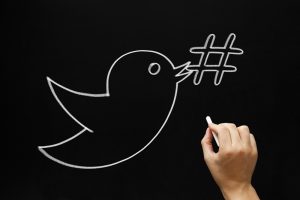Visuals hit the mark in a fast-paced world
Creating messages that cut through social media, news cycles and even the humble inbox has never been easy, but, with more noise across more channels, it’s become more important than ever to create messages that stand out and land with impact. Visual communications tools are gaining traction as a way of shaping messages that hit…
Creating messages that cut through social media, news cycles and even the humble inbox has never been easy, but, with more noise across more channels, it’s become more important than ever to create messages that stand out and land with impact.
Visual communications tools are gaining traction as a way of shaping messages that hit the mark and resonate across channels, opening new avenues for reaching audiences and providing a key addition to the communicator’s toolkit.
Technology, creativity and communication are coming together in new ways, according to Megan Thomas, president of the NSW Chapter of the International Association of Business Communicators (IABC).
“This is really exciting for professional communicators because our messages are more likely to be effective, and it frees up time to focus on strategy and stakeholder relationships – often where the greatest value and impact is,” Megan said.
Canva communications and AI experts recently hosted IABC members at company headquarters and explained how they use visual communications to drive engagement across internal and external audiences.
More channels mean higher stakes
In a distracted world, visual communications are simply more effective and more efficient than text alone, Lachlan Andrews, Head of Corporate Communications at Canva, said.
“The spotlight on communicators has intensified,” Lachlan said.
“Post-COVID, I think you’ll agree we’re all being asked to do more with less – faster and more efficiently. When you throw in multiple channels, multiple markets, multiple time zones, the stakes only increase,” Lachlan said.
Communicators can use visuals for a range of reasons:
- Explain complex ideas more easily: By using charts, graphs and diagrams, communicators can break complex concepts down into clear visuals.
- More memorable than text-based content: By using visuals, communicators can ensure that their messages are more likely to be remembered by their audience.
- Drive solutions: Visual elements encourage creativity, which can expand the pool of solutions to a given challenge.
Boosting audience engagement
Research shows that people are more likely to engage with visual content than they are with text only. By using images, videos, and infographics, communicators can create content that is more engaging and will hold the audience’s attention longer.
Visual communications skills are required for nearly every role throughout Canva. The company leverages its tools to drive engagement across external audiences. Its teams also create presentations, websites and updates that help drive the company culture, Edwina Munns, the company’s Head of Internal Communications, said.
“Visual storytelling at Canva keeps us on the same page. It helps drive knowledge across the company and helps ensure our teams are rowing in the same direction,” Edwina said, adding the company has operations across eight countries.
She said visuals also create moments of engagement as well as moments of fun, creating a virtuous cycle that drives connection, which brings culture to life, which deepens connection, which further embeds culture.
More time to create impact
AI is hot topic among corporate writers, but it’s just as topical for designers and others who use visuals in their communications. Far from the fear-driven view of AI — robots are stealing our jobs – Canva uses AI for tasks that, frankly, most people don’t like doing.
Danny Wu, Canva’s head of AI products, says that’s where AI really excels. “Think of it this way, I could give you back an hour in your day, what would you do with it?
“AI can do repetitive, low-value tasks, leaving more time for our teams to do the high-value work that creates impact,” Danny said.
For example, people create campaigns at Canva and use AI to quickly build campaign toolkits, including social media templates, zoom backgrounds and even billboards, freeing the creative team to design the next campaign.
While generative AI is a disruptor, rapid technological change has always been part of the communications industry, the IABC’s Megan said.
“Communicators are creative people and very solution-focused so, with a little upskilling, we’re well positioned to make these new tools advance us rather than replace us,” she said.
Discover insights.
Looking for greater choice in the contract options available to you? Having history and rapport with a specialist recruiter like Fraser Clapcott will open doors to opportunities you may have missed for yourself, that add value for both contractor and employer. In the current climate of uncertainty, a willingness and propensity for flexibility comes with…
If you’ve been ruminating on changing-up your comms career, now may be the ideal time to talk with your trusted recruiter about making a move. Salt & Shein Director, Lucy Newcomb, sees significant scope for motivated communicators to broaden their career horizons, and make the job of their dreams a reality, in 2023. “A rapidly…
Digital marketing drives value – for those who keep pace Faster communication, lower costs, higher conversion – is there anything digital marketing can’t do? Its ability to drive value from every step of the marketing process is unprecedented, but maximising this value is a demanding exercise. We asked two specialists in this area to tell…







